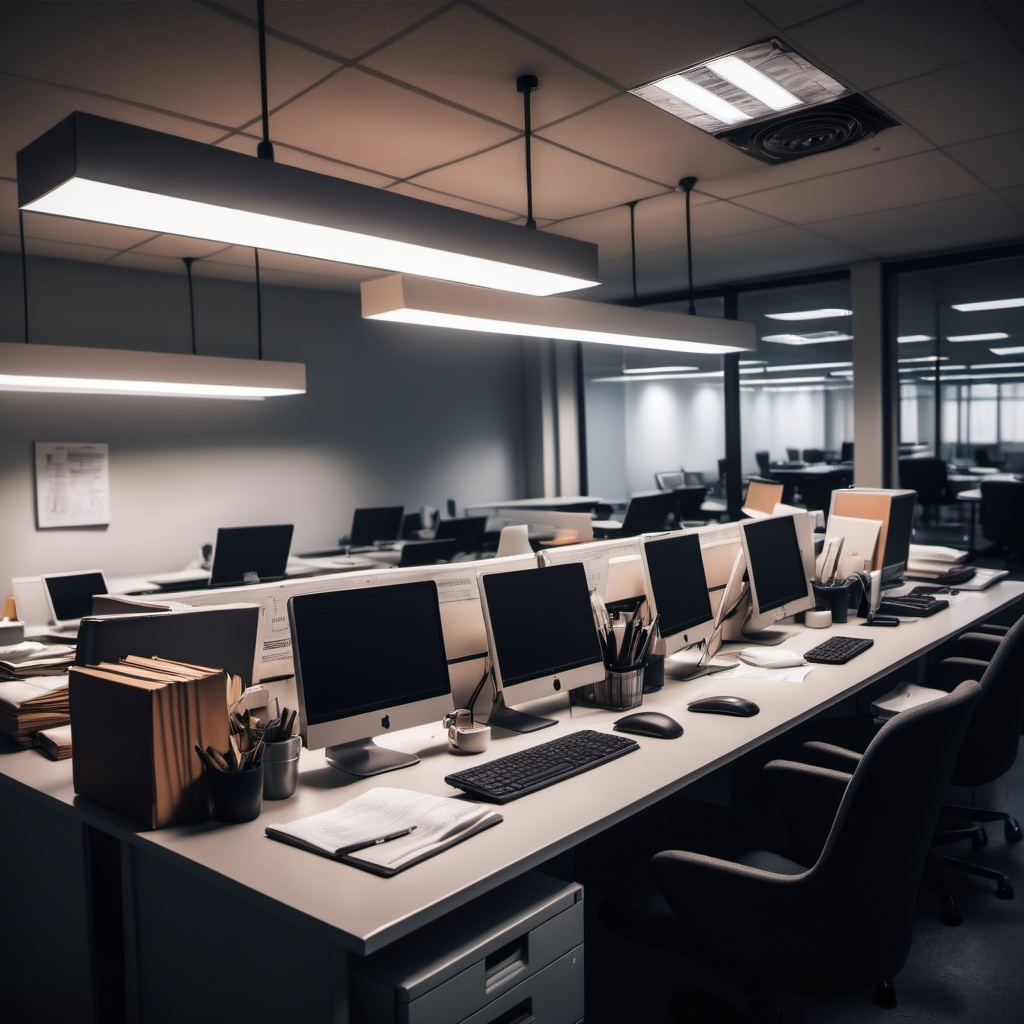Introduction
Lighting plays a pivotal role in shaping the workplace environment, influencing employees’ mental health, productivity, and overall mood. Proper illumination not only enhances visual comfort but also impacts physiological and psychological well-being. Conversely, inadequate or poorly designed lighting can lead to various health issues, particularly affecting neurodiverse individuals. This article delves into the significance of workplace lighting, supported by relevant statistics and insights.
The Importance of Proper Lighting in the Workplace
Effective lighting is crucial for creating a conducive work environment. It directly affects employees’ ability to perform tasks efficiently and comfortably. Studies have shown that exposure to natural light in office settings can lead to improved mood, increased energy levels, and enhanced productivity. According to research on healthy buildings, access to natural daylight can improve sleep duration and quality, thereby positively influencing overall health.
Moreover, the quality of artificial lighting also plays a significant role. Lighting that mimics natural daylight, especially blue-enriched white light, has been associated with higher levels of alertness and better cognitive performance. A study on mood lighting found that blue-enriched lighting in office settings led to improved alertness, performance, and sleep quality among employees.
Impact on Mental Health and Mood
Lighting conditions have a profound effect on mental health and emotional well-being. Exposure to bright light during the day, particularly in winter months, has been linked to reduced distress and improved self-reported health. The Wikipedia article on healthy buildings references a study indicating that bright light exposure can alleviate distress and enhance vitality.
Influence on Productivity
On the other hand, inadequate lighting can contribute to feelings of depression and anxiety. Poorly lit environments may lead to eyestrain and headaches, further exacerbating stress levels. Ensuring adequate lighting is therefore essential for maintaining mental well-being in the workplace.
The relationship between lighting and productivity is well-documented. Proper illumination reduces errors, decreases eye fatigue, and enhances concentration. A well-lit workspace enables employees to perform tasks more efficiently, leading to increased output.
Conversely, insufficient or overly harsh lighting can impair visual acuity, leading to mistakes and reduced work quality. Adjustable lighting solutions that allow employees to control their immediate environment can further enhance comfort and productivity.
Challenges Posed by Poor Lighting
Inadequate lighting can lead to several issues, including:

- Visual Discomfort: Insufficient or uneven lighting can cause eye strain, headaches, and visual discomfort, leading to decreased productivity.
- Mood Alterations: Dim or flickering lights can negatively affect mood, potentially leading to irritability and decreased motivation.
- Health Concerns: Prolonged exposure to poor lighting conditions may contribute to long-term health problems, including sleep disturbances and mental health disorders.
Considerations for Neurodivergent Individuals
For neurodiverse individuals, such as those with autism or ADHD, lighting conditions can significantly impact comfort and functionality. Sensory sensitivities may make certain lighting unbearable, leading to overstimulation or discomfort. An article from The Times highlights that nearly half of lab workers are neurodivergent, and poor lighting can exacerbate issues like overstimulation, underscoring the need for inclusive design.
To accommodate diverse sensory needs, workplaces should consider the following:
- Adjustable Lighting: Providing options for employees to adjust lighting levels to their preference can help reduce sensory overload.
- Use of Natural Light: Maximising natural light exposure while offering controllable shading options can create a balanced environment.
- Avoiding Flicker: Ensuring that lighting systems are free from flicker can prevent discomfort for those sensitive to light fluctuations.
Recommendations for Optimising Workplace Lighting
To harness the benefits of proper lighting, consider the following strategies:
- Conduct Lighting Assessments: Regular evaluations can identify areas with inadequate illumination, allowing for timely improvements.
- Implement Adjustable Lighting Solutions: Providing employees with control over their lighting can cater to individual preferences and reduce discomfort.
- Incorporate Natural Light: Designing workspaces that maximise natural light exposure can enhance mood and productivity.
- Educate Employees: Raising awareness about the importance of proper lighting can encourage individuals to make adjustments that benefit their well-being.
Conclusion
Lighting is a fundamental aspect of workplace design that significantly influences mental health, productivity, and mood. By prioritising appropriate lighting solutions and considering the diverse needs of all employees, organisations can create healthier, more productive, and inclusive work environments.








